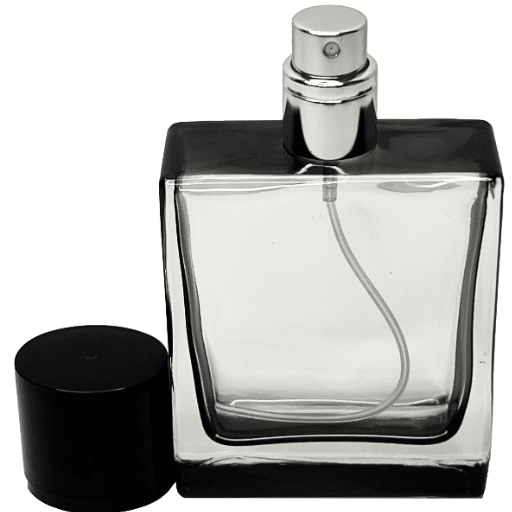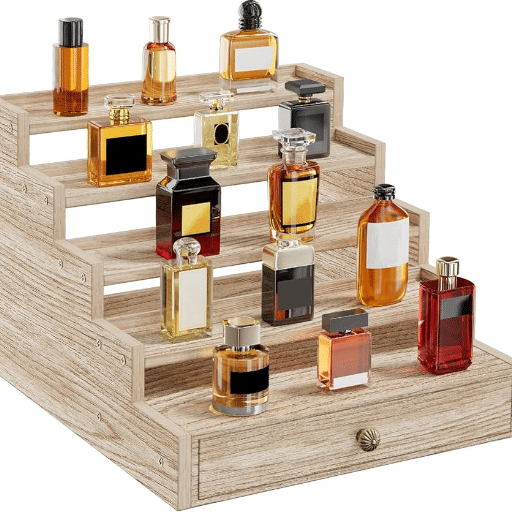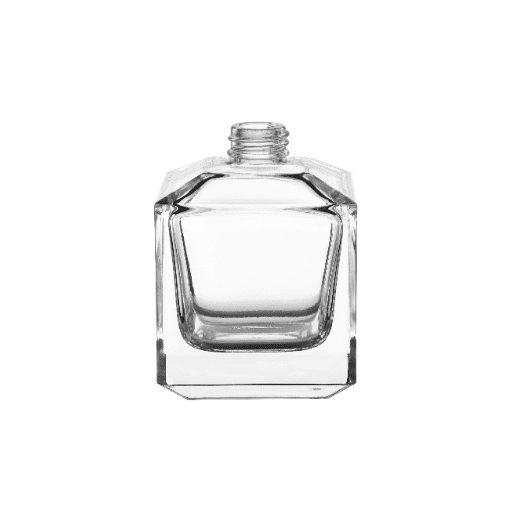Much of the emphasis behind perfecting one’s fragrance experience is much too often given to anything from the nuance of a spray mechanism. One unfashionable component delivers the delicate mist evenly and properly on the skin, allowing the scent to cling powerfully to the bearer. What serious claims do spray nozzles make, and how does their design affect the application and realization of the olfactive hours of your cologne? Going further, we’ll study the inner mechanical workings alongside the workable design of perfume spray mechanisms, attempting to unearth the operating physics behind them and making a case for their importance concerning manufacturers as well as consumers. This article on perfume spray nozzles and their crucial place in the world of scents will see any fragrance enthusiast, design product enthusiast, or inquisitive mind equipping themselves with knowledge concerning the patent mechanism fronting that seamless spritz from a bottle of fine cologne.
Understanding the Functionality of Perfume Spray Nozzles
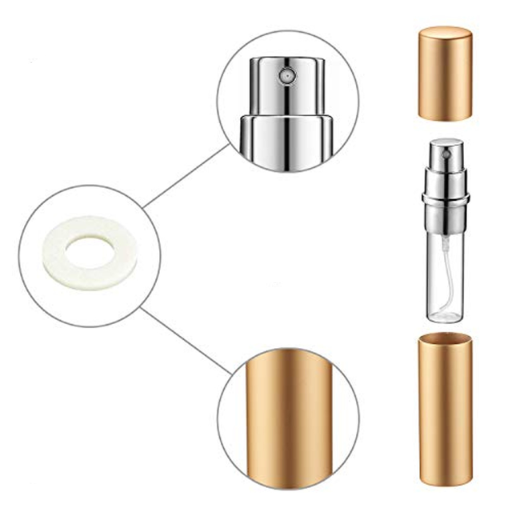
By means of pressure and airflow, the perfume spray nozzle system converts the liquid fragrance into a very fine mist. When you press the nozzle, the pump sets up pressure affecting the flow of scent from its minuscule opening. The liquid then meets air and breaks into very small droplets that disperse evenly, giving it the kind of application that is efficient and uniform, covering a large area and projecting the scent to another level. The size of the droplet and spray pattern depend on the nozzle design, while overall performance ultimately delivers an excellent experience on the part of the user.
How Perfume Spray Nozzles Work
When talking about how perfume spray nozzles work, one has to emphasize the working principle and the most basic design elements. The nozzle uses pressure to atomize the liquid perfume. When you press the pump, it forces the liquid through a small opening at high speed, allowing the liquid to break up into tiny droplets as it meets the surrounding air, letting it out as a finely dispersed spray. The nozzle is designed then to produce droplets of an optimum size, properly dispersed. Precision engineering combined with fluid dynamics ensures that the perfume is atomized efficiently to cover the user adequately and diffuse well.
The Importance of Even Fragrance Application
The fact that an even application of a fragrance results in a balanced scent that lasts is of utmost importance. Uneven spraying results in a high concentration of the fragrance in one spot whereas in another it is left untouched, destroying the olfactory experience intended to be created by the perfumer. An even application makes sure that the fragrance hits the skin evenly in terms of heat and chemistry. Uneven application wastes the fragrance, and it goes on to perform poorly in the course of the day. This emphasizes the importance of a good spray mechanism and uniform spraying techniques for the best outcome.
Common Types of Perfume Nozzles
Common types of perfume nozzles include spray nozzles, rollerballs, droppers, and splash caps.
|
Nozzle Type |
Key Features |
Advantages |
Suitability |
|---|---|---|---|
|
Spray Nozzle |
Fine mist delivery |
Even coverage |
Everyday use |
|
Rollerball |
Controlled roll-on |
Precision use |
Travel-friendly |
|
Dropper |
Measured drops |
Minimal waste |
Concentrated oils |
|
Splash Cap |
Direct pouring |
Simplistic design |
Traditional scents |
Types of Perfume Spray Nozzles Available
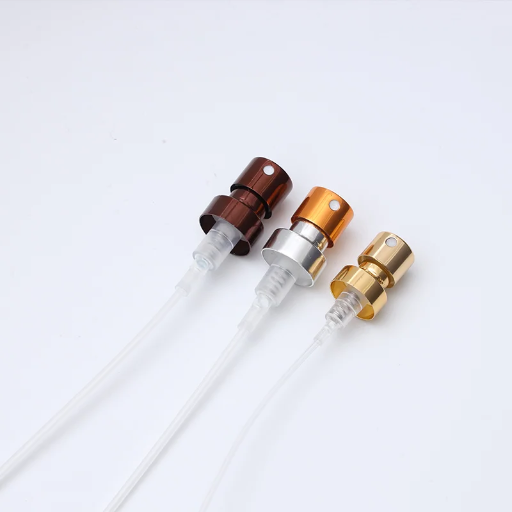
Depending on its mode of operation or intended use, a perfume spray nozzle may be categorized. The spray nozzles deliver the perfume in a fine mist, thereby allowing for equal spatial distribution and coverage. Such sprayers are suited for daytime and casual uses. The rollerballs will deliver exquisite precise dosing through the rolling action, suited mainly for targeted application, usually while travelling. Droppers dispense drops of perfume, which reduces wastage of the product and works well for concentrated fragrance oils. On the other hand, splash caps allow for direct pouring of the perfume onto skin or clothes-the more simple and old-fashioned form. Each finds particular uses based on preferences and practical needs, thus giving the user the freedom to decide depending on lifestyle and application needs.
Fine Mist Nozzles vs. Atomizers
Fine mist nozzles deliver a controlled, even spray for precise application, while atomizers produce finer, more diffused particles for broader coverage.
|
Parameter |
Fine Mist |
Atomizers |
|---|---|---|
|
Spray Type |
Controlled |
Diffused |
|
Particle Size |
Larger |
Smaller |
|
Coverage |
Targeted |
Wide Area |
|
Usage |
Precision |
Broad Application |
|
Ideal For |
Perfumes, Skincare |
Fragrance, Air |
Choosing the Right Spray Head for Your Needs
Choosing the right cologne spray nozzle depends upon how one wishes to use it and their requirements for usage. Fine mist nozzles provide the precision required for localized fragrance applications; the scent then lingers near the skin. While atomizers are recommended for wider dispersion, their ambiance is ideal to subtly scent the air around them. Typically, a fine mist nozzle ensures the highest scattering and intensity of the scent, keeping customer wastage at a minimum. An atomizer, however, best serves when one wants to scent an entire room or larger area. Hence, it should really be a matter of determining what purpose the end product is serving and how they want said fragrance experienced.
Refillable vs. Non-refillable Options
Refillable options prioritize sustainability and cost-efficiency, while non-refillable options emphasize convenience and portability.
|
Key Point |
Refillable |
Non-refillable |
|---|---|---|
|
Sustainability |
High |
Low |
|
Cost |
Low (long-term) |
High (long-term) |
|
Convenience |
Moderate |
High |
|
Portability |
Moderate |
High |
|
Durability |
High |
Variable |
|
Initial Cost |
High |
Low |
|
Waste |
Minimal |
High |
Factors to Consider When Selecting a Perfume Spray Nozzle
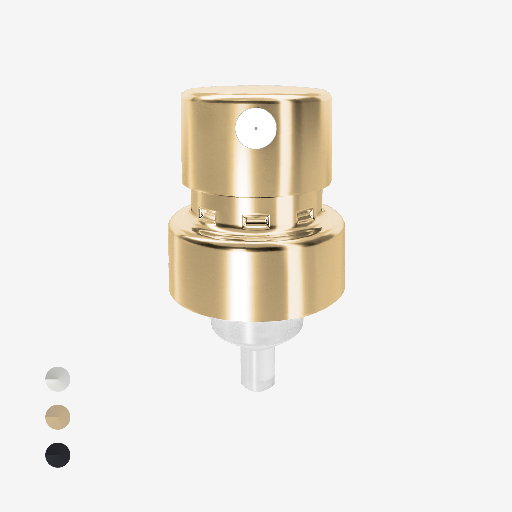
A few key considerations in selecting a perfume spray nozzle include the following:
1.Spray Pattern-Choose between a fine mist for general, even distribution or a direct aimed spray based on the desired application. A fine mist works best when a broad, gentle coverage is needed. A targeted spray is very useful when spot application is needed.
2.Material Durability-Ensure that the nozzle is of high-quality materials and corrosion-resistant if the product is to be used with an alcohol-based perfume to ensure performance and life.
3.Compatibility-This is important for secure fits in the bottle-neck sizes and thread-types that may cause the nozzle to leak or operate improperly.
4.Refillability-Consider whether you want a refillable one, which saves on waste and long-term costs, or a non-refillable one, which is easy for one-time use.
5.Aesthetics-The design of a nozzle should be aligned with the packaging to maintain the brand image or fit one’s personal style preference.
In order to make an optimal choice of a nozzle that creates synergy between functionality and practicality from a user standpoint, the aforementioned factors must be considered with utmost care.
Matching Nozzle to Bottle Design
Key considerations when selecting a nozzle to complement the perfume bottle design include bottle size and neck diameter, plus aesthetic alignments. Most perfume bottles are made to standard neck dimensions-the common sizes being 13, 15, or 18mm-which relate nozzle options to bottle sizes accordingly. It is essential that the nozzle be matched to size so that a snug fit is assured-one that prevents leakage and in some cases abrasion and spreading of the fine mist. For glamorous and high-end designs, fine mist atomizers are preferred simply because they augment the experience of fragrance dispersion and meet a visually glam appeal. For unconventional or creative bottles, it could even mean more problematic to the point of requiring a fiduciary solution for a finely designed nozzle integration that is neither ill-functioning nor compromised in design.
Personal Preference and Fragrance Concentration
My first criteria when buying an atomizer is its function and design-aesthetically aligning with my preferences and the real purpose its fragrance is intended for. For lighter fragrances worn daily of lower concentration such as Eau de Cologne and Eau de Toilette, I prefer atomizers that apply a fine mist for a very even and very subtle application. Precision atomizers, by contrast, are needed for higher concentrations of perfume such as Eau de Parfum and pure perfume oils, so as to avoid an excessive application that would dilute the enchantment of the scent. Moreover, an atomizer should incorporate the aesthetics of the bottle as well; they complement each other so well that their visual impact is effortless, elegant, and fulfilling, thus, not disregarding practicality or comfort of use. Special options for very different bottle designs, however, become even more interesting when the presentation is part of the entire experience.
Material Considerations: Plastic vs. Glass
When considering the material for cologne spray nozzles—plastic or glass—factors such as durability, cost, weight, compatibility, recyclability, and design flexibility should be evaluated.
|
Key Point |
Plastic |
Glass |
|---|---|---|
|
Durability |
High |
Fragile |
|
Cost |
Low |
High |
|
Weight |
Light |
Heavy |
|
Compatibility |
Variable |
Stable |
|
Recyclability |
Moderate |
High |
|
Flexibility |
Customizable |
Limited |
Troubleshooting Common Issues with Perfume Spray Nozzles
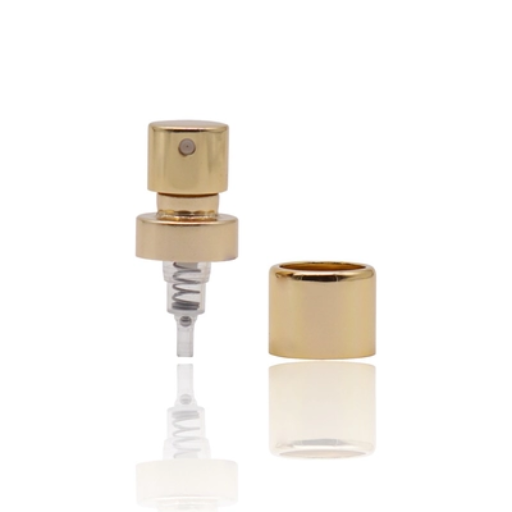
1.Clogged Nozzle
Solution: Take the nozzle off and soak it with warm water or clear blockages with a fine pin. Guarantee that the liquid inside the bottle is filtered well enough so that blockages do not occur.
2.Weak or No Spray
Solution: Get rid of any airlocks along the dip tube and check if the nozzle is aligned correctly. After that, put the nozzle back on securely and check for enough liquid inside the bottle.
3.Leaking Nozzle
Solution: Look over the fitting between the nozzle and the bottle for any cracks or loose fittings. If the cap is loose, fasten that thing it tightly; otherwise, replace any faulty item.
4.Irregular Spray Pattern
Solution: Clean the nozzle and make sure the spray mechanism isn’t damaged; if the problem still occurs, replace the nozzle.
5.Sticking Mechanism
Solution: Lubricate the moving parts with a compatible and safe product; alternatively, replace the nozzle if it continues to remain stuck.
Addressing Clogging Problems
Most clogging problems hinder a spray system on its processes. For starters, let the nozzle soak in warm soapy water to prepare residue for removal. Try to clear the obstructing material from the nozzle opening with a pin or a needle, with caution, not to enlarge or damage the hole. Should the clogging remain in place with all attempts to remove it, flush the tube and nozzle assembly using warm water or a mild solution of vinegar. Blockages of a hard nature might need more specialized chemicals aimed at breaking down such build-ups. Regular maintenance like rinsing the nozzle after every use is a great way to limit clogging over time and also extend its lifetime.
Ensuring an Even Spray
To have an even spray, check if the nozzle is clean and unblocked-very often, unevenness in distribution is caused by some debris clogging up the nozzle opening. Check if it is properly aligned and tightened because it may be irregular if misaligned. Use the right level of pressure for your machine since too high or too low could hinder uniformity in spraying. For machines with adjustable spray settings, correctly calibrate your nozzles before the actual application. Perform checks weekly to identify issues related to wear or misalignments within the system.
Fixing a Perfume Bottle or Nozzle Malfunction
With a malfunctioning perfume bottle or nozzle, check first if the nozzle is clogged. Remove the nozzle and rinse it under warm water or soak it for a few minutes with rubbing alcohol to dissolve any blockages caused by dried-up perfume residue. For bottles with removable spray mechanisms, check the straw inside for obstruction or damage and ensure that it is properly attached. In case the nozzle sprays unevenly or leaks, check for cracks or any misalignment and realign or change the nozzle, as the case may be.
If it still refuses to spray, make sure there is enough perfume in the bottle to create the needed pressure for dispensing. Tap the bottle gently to remove air bubbles that could be trapped inside the system. After checking the above, check whether there is wear against the seal at the base of the nozzle and ensure that it fits tightly so as not to lose pressure. If the pump fails, keep pressing firmly to build pressure or just change the pump mechanism. Regular maintenance and care would prevent these issues and prolong the life of a perfume bottle.
The Impact of High-Quality Nozzles on Fragrance Experience
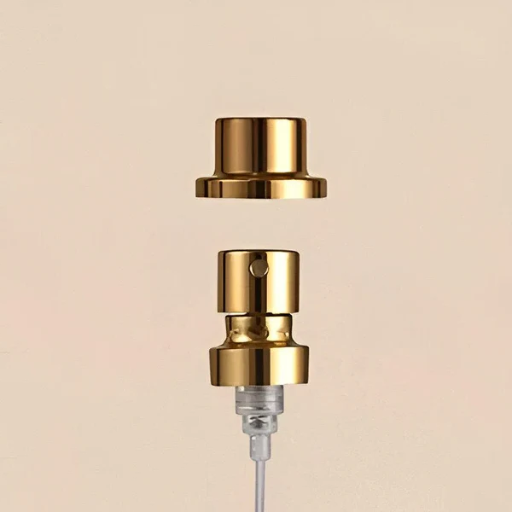
To provide an optimal fragrance experience, the so-called high-quality nozzles must ensure equal application and a thin layer of mist across the perfume. Well-designed nozzles produce a fine spray pattern, which allows the perfume to disperse over a wide surface area, thereby enhancing the fragrance’s longevity and projection. Moreover, an enhanced quality helps guard against excessive wastage of perfume and hampers any clogging or leaking issues that arise during usage, thus maintaining a fine-quality service and upholding the integrity of the fragrance. Therefore, the quality of the design, together with the materials used for its production, determines how well the user will enjoy applying a particular perfume.
Enhancing Scent Application
High-quality nozzles are created to transform scent efficiently. The uniform, thin mist produced by such nozzles maximizes fragrance distribution while preserving the fragile molecules of the perfume. Their sophisticated design limits over-spraying, thus reducing product wastage and ensuring even application. They also extend the working life of the nozzle due to their durable materials and features that reduce clogging, thus guaranteeing a smooth application today and into the future. This emphasizes the importance of nozzle quality to achieving both functional and sensorial excellence in applying fragrance.
Investing in Quality for Longevity
High-quality nozzles yield both high performance and long life while being economically the best choice on the market. These nozzles are manufactured with high-precision to that their spray patterns remain consistent even in suboptimal pressure situations; further, the flow rate is never more than needed to dispense a precise dose, thus keeping wastage at minimum levels. Finished in robust materials such as stainless steel and high-performance polymers, they withstand abrasion, corrosion, and clogging, thus ensuring a long service life. These nozzles do more than just satisfy the spray requirements of various industries but also specialize in fine mist atomization and precise stream spray, adhering to state-of-the-art designs and standards. From high-quality nozzles, one gains better functioning, less maintenance, and the saving of money with time.
Market Trends in Spray Nozzle Technology
In the perfume spray nozzle industry, advances in engineering and demand for precision and green measures are emphasized more. From a technical perspective, modern nozzles come with micro-fluidic technology for fine mists with uniform fragrance distribution, also restricted in product usage. Environment-friendly considerations are now far more prevalent, as brands and manufacturers look to minimize waste and take up eco-friendly measures. On the other hand, customization trends are also making their way into this industrial niche; adjustable nozzles that allow customers a degree of flexibility in spray pattern and intensity are becoming more and more available. Innovative materials designed to support the sustainability initiative without compromising performance are another trend worthy of mention. The introduction of smart packaging solutions, with sensors embedded in nozzles that control output, shows the evolution of the industry as far as the union of technology with the user experience. Looking at these can inform us about how perfume spray nozzle technology evolves at the juncture of precision, customization, and environmental consciousness.
Reference Sources
-
Exploring the Parts of a Perfume Bottle: A Detailed Guide – This guide provides insights into the components of a perfume bottle, including the nozzle, and tips for maintenance.
-
Types of Perfume Bottle Nozzles: Which One is Best for Your Fragrance – A detailed guide on selecting the right nozzle for functionality and luxury.
-
How to Apply Cologne: Man’s Guide to Fragrance Use – Offers practical advice on cologne application, including spray techniques.
-
The Hidden Science of Perfume Spray Caps – Explores the science behind spray caps, including spray patterns, droplet size, and dispersion.
-
HAKIDZEL Refillable Perfume Spray with Pressing Mechanism – A product page showcasing refillable perfume sprays with pressing mechanisms, offering insights into design and efficiency.
Frequently Asked Questions (FAQ)
Q:What is a cologne spray nozzle?
A:Cologne spray nozzles are attachments fitted on cologne bottles to disburse the fragrance in a fine mist. With all of the spray being directed to an area, this method is ideal for users to evenly and conveniently apply the scent. It enriches the experience of using the product.
Q:How can the broken nozzle of a spray bottle be fixed?
A:If your spray bottle does not spray anymore due to a broken nozzle, try washing the nozzle using warm water. Remove the nozzle and rinse in hot water. If it is certainly not working, consider purchasing a new nozzle or transferring the fragrance into a different spray bottle.
Q:What can frosted glass spray bottles be used for?
A:Frosted glass spray bottles are highly desirable for cosmetic packaging because they offer an appealing means of storing perfumes alongside other liquids. The frosted finish can indeed protect the contents from UV light while tricking the eyes into admiring the look of the fragrance bottles.
Q:Can I put perfume in a smaller spray bottle?
A:Yes, you may decant the perfume into a smaller spray bottle for convenience, especially for travel purposes. Applying a fine mist sprayer or syringe will help avoid spilling the fragrance while preserving the fragrance’s integrity.
Q:What do I do if my perfume case is full but won’t spray?
A:Check if the nozzle is clogged. It might clear with a quick rinse in running hot water. If the problem persists, obtain a needle or pin and attempt to clear it gently or transfer the perfume to an alternative spray pump or atomizer.
Q:What is the difference between a fine mist sprayer and a regular spray nozzle?
A:Fine mist sprayers give a more gentle and evenly distributed spray than common spray nozzles. This kind of light careful application is appropriate for perfume that has to be applied delicately. Fine mist sprayers are commonly found on perfume spray bottles designed for cosmetic use.
Q:How do I choose the right perfume sprayer for my needs?
A:When selecting a perfume sprayer, consider the size and type of the fragrance bottle. Look for a dispenser that matches the capacity of your bottle, such as 30ml, 50ml or 100ml. Also think about whether you’d prefer a plastic or metal bottle and if you’d want it to be refillable for sustainability.
Q:Are there travel size cologne bottles available?
A:Yes, there are travel size bottles for colognes that are cheap and easy to carry around. These small spray bottles hold about 30ml to 50ml of fragrance and are ideal size for stashing inside a carry-on bag or for casual application.
Q:What is a perfume atomizer and how does it work?
A:An atomizer for perfumes is a perfume bottle that sprays a fine mist of fragrance, which is usually equipped with a pump mechanism that lets one atomize the fragrance and spray it thinly and evenly. Atomizers are useful in that they provide a very refined application without wasting excess perfume.

